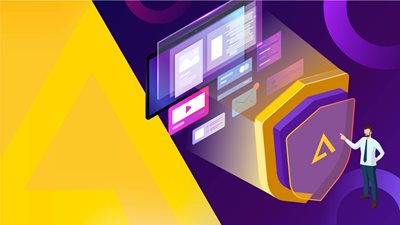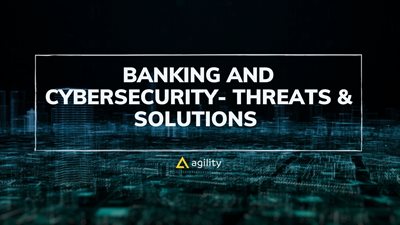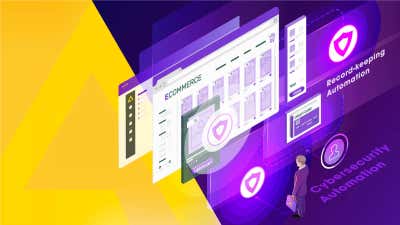Optimizing Digital Experiences in Cybersecurity


Cybersecurity firms are responsible for maintaining the security and integrity of enterprise digital systems. With 85% of small and medium-sized enterprises expected to increase spending on IT security until 2023 and a projected $101.5 billion to be spent on service providers by 2025, cybersecurity is a priority for many.
Effective cybersecurity is not only about managing risk but also about implementing the correct strategy throughout the organization. Everything from product innovation to the customer experience is affected. For cybersecurity firms tasked with keeping everything secure, customer experience is critical to success.
Today’s customers expect an engaging digital experience, even in an industry like cybersecurity. Firms have to ensure that their content and messaging entice customers to want to learn more and keep them onboard. However, with the proliferation of digital channels and the number of customer interactions happening across multiple devices, that can be easier said than done.
Companies in the cybersecurity industry need a way to optimize digital experiences to keep them ahead of the latest trends while maintaining the high level of security their customers expect them to provide with their products and services.
In this article, we’ll explain:
- How outdated legacy systems put cybersecurity at risk
- The trend cybersecurity firms need to be aware of
- How cybersecurity companies should build the foundation for their digital experiences
- Things to look for in a cybersecurity DXP
How Outdated Legacy Systems Put You In Danger
Keeping technology systems up to date can be a painstaking process for some enterprises. These systems are often deeply integrated into the existing infrastructure, which can make replatforming to a new system or implementing other tools problematic.
However, while the initial replatforming of a legacy system might seem expensive or time-consuming, relying on these systems is likely placing the business in greater danger, especially from a cybersecurity perspective. Here are some of the ways legacy systems can endanger the wider organization:
Lack of Adaptability
When legacy systems become outdated, it essentially means that a new piece of technology has come onto the scene and made the previous platform irrelevant. These legacy systems can still be used for a while, but one of their main problems is that they aren’t adaptable.
Legacy infrastructure doesn’t easily integrate with modern technology. As a result, if you need to purchase a new piece of software because of the modern capabilities it provides you, the chances are that this system won’t be able to connect with your legacy tools. Companies with legacy systems can easily purchase another tool that performs the same job yet still spend additional resources maintaining the old system because they haven’t found a way to get rid of it.
On-Premise Infrastructure
Another challenge of dealing with legacy infrastructure is that it is likely an on-premise system. The problem this poses is that organizations cannot leverage the benefits of the cloud and must instead rely on their legacy system, which has likely grown outdated.
Single Point of Failure
No company is wholly safe from cyberattacks. However, the companies with the best security systems have the capabilities to mitigate threats and also avoid the entire tech stack falling victim to threats. Unfortunately, with legacy systems, there is usually a single point of failure to worry about. When a problem does arise, it can effectively bring the entire system down, if only for a short time. Then developers and IT operations need to work extra hard to get the other systems back up and running.
Limited Visibility
Threat mitigation and swift detection are the best ways to secure software systems. However, legacy systems often provide limited visibility into your organization's threats. Identifying potential threats can be impossible without proper visibility before they become truly problematic.
Cybersecurity Trends Companies Should Be Aware Of
Cybersecurity is continually evolving as threats become more sophisticated and technology grows. Consequently, a few notable trends companies should be aware of can affect digital experiences.
Common Threats Faced
One major security threat content management systems are distributed denial of service attacks. They affect the traffic coming to the server and can cause servers to become overwhelmed and force a website to go down. They should be on the radar of any cybersecurity company assessing their infrastructure.
API Security
Another threat to be aware of is the growing trend of attacking APIs. Gartner predicted that APIs would come under the most significant threat facing most companies. Tests that protect the API layer and go deeper than periodic threat assessments like penetration testing will need to be considered, and the infrastructure that supports these modern approaches.
Multiple Channels
Companies can no longer only worry about their website in today's omnichannel environment. A host of other channels need to be secured as they are connected to the tech stack. Having the right infrastructure in place to deal with these multiple channels and maintain high levels of security is essential.
Building a Secure Foundation of Your Digital Experiences
For companies ready to elevate the level of their digital experiences having a secure foundation is necessary. One of the ways to do that is to leverage software technologies that follow the MACH approach. Leveraging microservices, an API-first approach, cloud-native technologies, and headless architecture can provide the secure foundation organizations need.
With microservices and headless architecture, businesses can gain increased security benefits. First, the composable approach enables organizations to swap out failing or less secure software for better choices. Unlike monolithic suites, if a software tool in a composable system fails, it is limited to that system, and the other tools in the ecosystem can keep running. To build such a secure foundation is with a composable DXP.
What to Look For In a Composable Cybersecurity DXP
A composable DXP can provide the cybersecurity foundation that your organization needs to handle your content management needs and keep everything secure against growing threats. However, you shouldn’t just opt for any solution. Here are some of the features that you should look for in a composable DXP with enterprise-grade security features:
Security & Compliance Standards
A DXP built for cybersecurity should be compliant with the highest security standards. This includes SOC2, ISO27001, a CSA Star certification, and others. These certifications and compliance protocols ensure that data processed using the system is protected and that processes are in place to handle any security risks.
Authentication & Permissions
Authentication that prevents unauthorized user access provides role-based access to certain assets or takes some actions should required. This includes multi-factor authentication, single sign-on, and the ability to set up permissions as necessary.
Content Delivery Network
Access to a global content delivery network (CDN) is another cybersecurity measure that can guarantee performance, uptime, and the added benefit of faster loading times for visitors.
Agility CMS: A Content Platform With Enterprise-Grade Security
Maintaining high-security standards can be challenging, even for the cybersecurity firms that protect our data. However, that job becomes more accessible with a modern DXP that offers headless architecture.
Agility provides an enterprise platform that not only gives marketers and developers what they need to create and deliver content experiences across any channel but also enables them to maintain the highest levels of security.
First of all, when it comes to content management, Agility CMS provides headless flexibility that allows developers to create frontends for any channel. They can use any JavaScript framework, from tried and tested options like React or Vue to newer frameworks like Svelte. This includes modern web development approaches such as Jamstack, helping provide customers with faster loading times and a better experience.
Meanwhile, marketers have access to the easy-to-use authoring capabilities they know from working with less secure traditional CMS platforms and the ability to preview content before publishing.
When it comes to security, Agility offers a sophisticated authentication layer through Auth0 that keeps us compliant with the latest certifications. Additionally, with hosting on Microsoft Azure, we also benefit from the 90+ certifications offered by a leading cloud provider.
ActZero, cybersecurity experts who help their customers detect and remediate potential threats, needed a secure CMS. The previous WordPress CMS was problematic, leaving them in danger. With Agility CMS, they gained a headless CMS that offered more protection due to its decoupled architecture. Marketers could still edit content as they saw fit without bothering developers.
Read more about how ActZero founded the secure solution they needed in our case study: Secure Solution for Security Expert - ActZero.

About the Author
Harmonie is the Senior Marketing Manager at Agility CMS
View Related Resources

Optimizing Digital Experiences in Cybersecurity

Banking and Cybersecurity- Threats & Solutions

